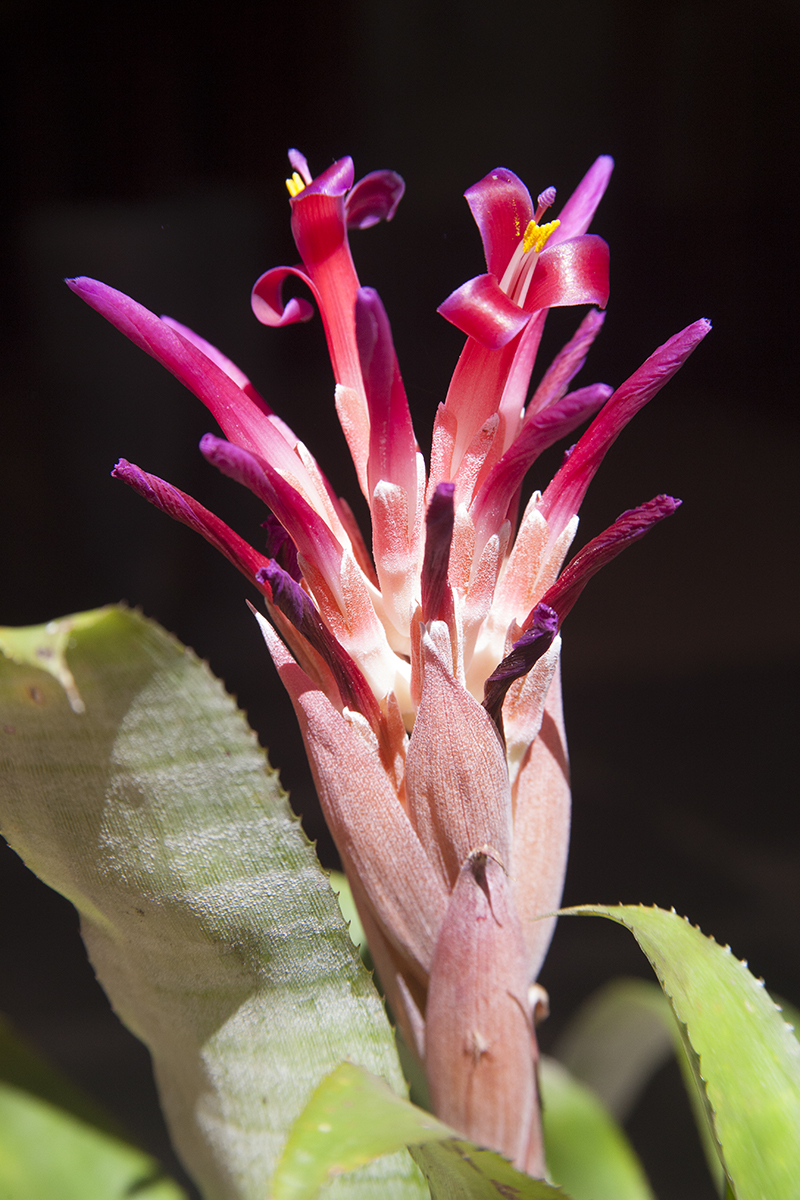A
catalogue of Bromeliads used for various projects by - © Lloyd Godman
This
is a catalogue of bromeliads used by Lloyd godman for his various installations
and photosynthesis projects - the collection of pants he accessed in
New Zealand from 1996 - 2004 was collected from a wide range of sources,
while most were brought from Greens Bromeliads, some were also donated
by the Dunedin Botanical Gardens. Later in 2004 these plants were either
sold or given away with his move to Australia.
Lloyd is at present re-establishing his collection where he now lives
in Melbourne.
A
Lexicon of Bromeliads: A
resource by Lloyd Godman
Blthough Billbergias produce flowers that are shot lived, they are very spectacular. These very hardy plants often have few leaves but they form in such a manner as to produce tall tubular structu res that hold deep reservoirs of water. These leaves are often dusted with silver bands, or the plant may take on an over all silver dusting. They like average to warm temperatures (60-85 degrees C, 16-30 degrees F), but some will tolerate temperatures near freezing for short periods. Many grow well as epiphytes on trees.
Plants are marked NZ for those collected in New Zealand - or Aust - for the new plants collected since coming to Australia
|
Billbergia
pyramidalis
|
|
|





|
Species/Cultivar: Species - commonly known as the Flaming torch
Seed parent plant:
Pollen Parent Plant:
Taxonomic rank: Species
Hybridizer:
Native distribution: Grows as an epiphyte on the lower parts of trees; also grows as a terrestrial on humus rocks and stumps in thick, dark forests of southern Brazil at elevations of 900-2,200 ft - also native to Venezuela, French Guiana, the Lesser Antilles and Cuba
Habit: . An old favorite, this species has been in cultivation the longest of any member of the genus, having been introduced in 1815. It is a popular garden subject in Florida. Broad, light green leaves, 1 1/2 -2 ft long and 2" wide, sometimes with a purplish tinge, form an open rosette from which the stout , erect scape rises several inches above the leaves.
Leaf shape:
Leaf cross section:
Pigmentation:
Spines:
Trichomes:
Axis:
Floral Bracts:
Rachis:
Bract on Stipe:
Primary Bract:
Internode:
Stipe:
Peduncle Bract:
Peduncle:
Inflorescence: The broad, dense inflorescence, 3-4" long and pyramidal in shape, has dazzling rosy red bracts, and similarly coloured flowers, some 20-30 in number
Flowers:
Petals:
Sepals:
Stamens:
Anther:
Stigma:
Pistil:
Pollen:
Roots:
Stalons:
Off sets:
Pollination:
Seed:
Germination:
Cultivation:
Fertilization:
Collection: NZ & Aust
|
|